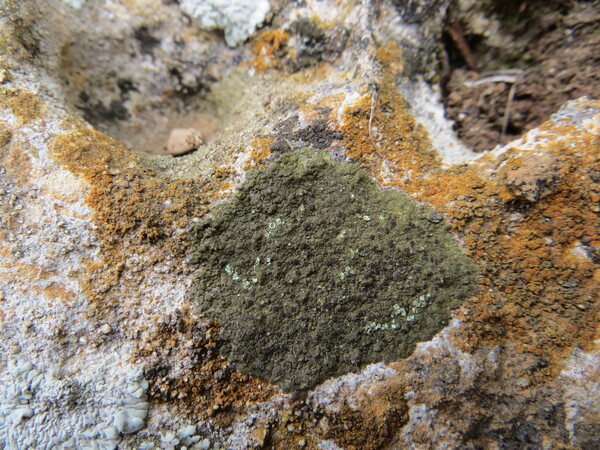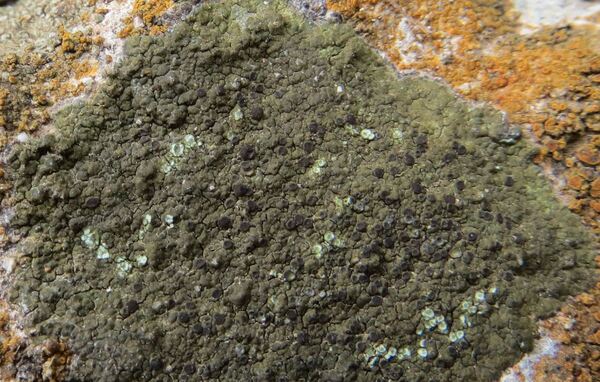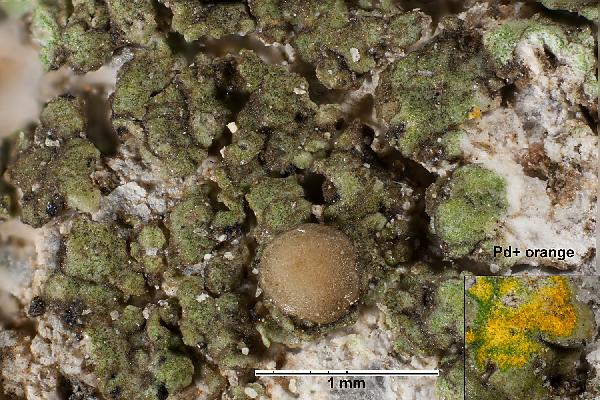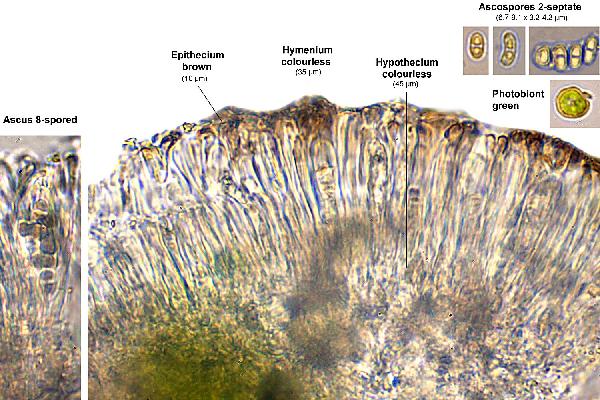Solenopsora olivacea (Fr.) H. Kilias subsp. olivacea
Herzogia, 5: 399, 1981. Basionym: Biatora olivacea Dufour ex Fr. - Syst. Orb. Veget., 1: 285, 1825.
Synonyms: Biatorina michelettiana A. Massal.; Biatorina olivacea (Fr.) Anzi; Catillaria olivacea (Fr.) Zahlbr.; Lecanora olivacea (Fr.) Nyl.; Placodiella olivacea (Fr.) Szatala; Ricasolia olivacea (Fr.) Bagl.; Toninia olivacea (Fr.) Clauzade
Distribution: N - VG (TSB 36502), Emil (Fariselli & al. 2020), Lig (Alonso & Egea 1994 Guttová & al. 2014, 2019, Senko & al. 2024). C - Tosc (Guttová & al. 2019, Senko & al. 2024), Marc (Guttová & al. 2019, Senko & al. 2024), Laz (Guttová & al. 2019, Senko & al. 2024), Mol (Garofalo & al. 1999, Caporale & al. 2008), Sar (Alonso & Egea 1994, Guttová & al. 2019, Senko & al. 2024). S - Camp (Garofalo & al. 1999, 2010, Aprile & al. 2003, 2003b, Nimis & Tretiach 2004,Guttová & al. 2019, Senko & al. 2024), Pugl (Nimis & Tretiach 1999, Guttová & al. 2019, Gianfreda & Matino 2020, Senko & al. 2024), Bas (Bartoli & Puntillo 1998, Guttová & al. 2019, Senko & al. 2024), Cal (Puntillo 1996, Senko & al. 2024), Si (Nimis & al. 1994, Poli & al. 1997, Grillo 1998, Grillo & Caniglia 2004, Caniglia & Grillo 2005, 2006, Guttová & al. 2019, Senko & al. 2024).
Description: Thallus crustose, episubstratic, brown-green, green or olive-green, epruinose, forming irregular, sometimes confluent, up to 10 cm wide patches, the central part often warted-areolate, the marginal part often lobed, the lobes usually short and flat, sometimes not well developed. Apothecia cryptolecanorine, sessile, 0.3-0.5(-0.8) mm across, with a pale to dark brown, flat to finally convex disc and a thin, poorly visible and often finally excluded thalline margin. Epithecium colourless to pale brown; hymenium colourless, 35-40 μm high; paraphyses simple, coherent, clavate; hypothecium colourless, 50-90 μm high. Asci 8-spored, cylindrical-clavate, with a K/I+ blue outer coat and a K/I+ uniformly blue apical dome, approaching the Catillaria-type. Ascospores 1-septate, hyaline, narrowly ellipsoid with rounded ends, (9-)11-15(-16) x 2.5-4(-5) μm. Pycnidia immersed in the thallus. Conidia bacilliform, 3.5-4.5 x 0.5-0.9 μm. Photobiont chlorococcoid. Spot tests: cortex K-, C-, KC-, P-, UV-; medulla P+ orange-red. Chemistry: medulla with pannarin and zeorin (both major).Note: a Mediterranean-Atlantic species found on large boulders of calcareous or basic siliceous rocks, usually on surfaces near the ground or on seepage tracks, especially in open woodlands of Tyrrhenian Italy.
Growth form: Crustose placodiomorph
Substrata: rocks
Photobiont: green algae other than Trentepohlia
Reproductive strategy: mainly sexual
Most common in areas with a humid-warm climate (e.g. most of Tyrrenian Italy)
Commonnes-rarity: (info)
Alpine belt: absent
Subalpine belt: absent
Oromediterranean belt: absent
Montane belt: absent
Submediterranean belt: extremely rare
Padanian area: absent
Humid submediterranean belt: rather rare
Humid mediterranean belt: rather common
Dry mediterranean belt: extremely rare

Predictive model
Herbarium samples
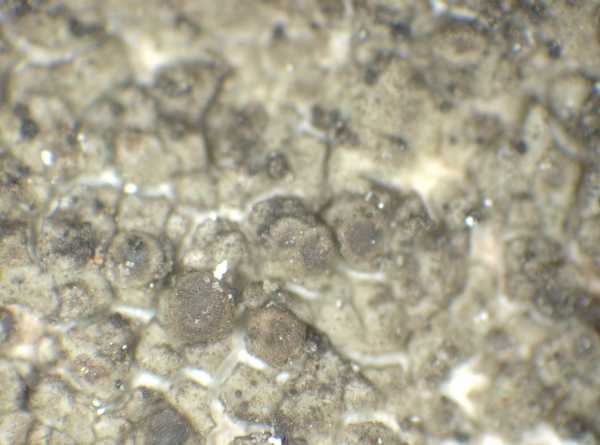

P.L.Nimis; Owner: Department of Life Sciences, University of Trieste
Herbarium: TSB (38355)
2008.02.25
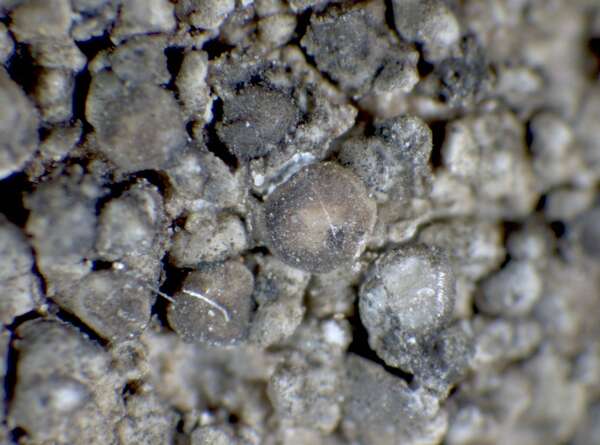

P.L. Nimis; Owner: Department of Life Sciences, University of Trieste
Herbarium: TSB (18699)
2001/11/30

Ulrich Kirschbaum CC BY-SA 4.0 - Source: https://www.thm.de/lse/ulrich-kirschbaum/flechtenbilder
On limestone.
S SE Europe; N-Cyprus; SE of Girne; Beşparmak Mountains; between Alevkaya and Antiphonitis Monastery
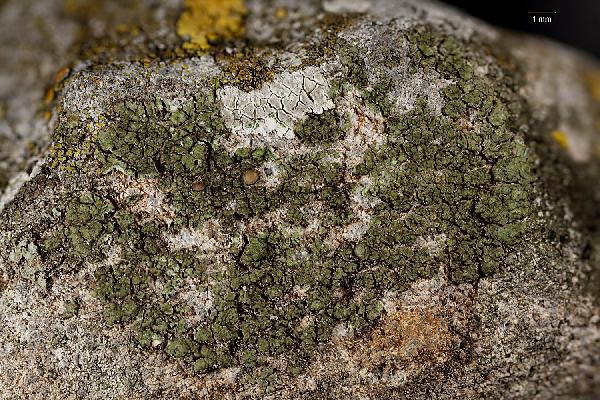
Ulrich Kirschbaum CC BY-SA 4.0 - Source: https://www.thm.de/lse/ulrich-kirschbaum/flechtenbilder
On limestone.
S SE Europe; N-Cyprus; SE of Girne; Beşparmak Mountains; between Alevkaya and Antiphonitis Monastery
Growth form: Crustose placodiomorph
Substrata: rocks
Photobiont: green algae other than Trentepohlia
Reproductive strategy: mainly sexual
Most common in areas with a humid-warm climate (e.g. most of Tyrrenian Italy)
Commonnes-rarity: (info)
Alpine belt: absent
Subalpine belt: absent
Oromediterranean belt: absent
Montane belt: absent
Submediterranean belt: extremely rare
Padanian area: absent
Humid submediterranean belt: rather rare
Humid mediterranean belt: rather common
Dry mediterranean belt: extremely rare

Predictive model
| Herbarium samples |


P.L.Nimis; Owner: Department of Life Sciences, University of Trieste
Herbarium: TSB (38355)
2008.02.25


P.L. Nimis; Owner: Department of Life Sciences, University of Trieste
Herbarium: TSB (18699)
2001/11/30

Ulrich Kirschbaum CC BY-SA 4.0 - Source: https://www.thm.de/lse/ulrich-kirschbaum/flechtenbilder
On limestone. S SE Europe; N-Cyprus; SE of Girne; Beşparmak Mountains; between Alevkaya and Antiphonitis Monastery

 INDEX FUNGORUM
INDEX FUNGORUM
 GBIF
GBIF

